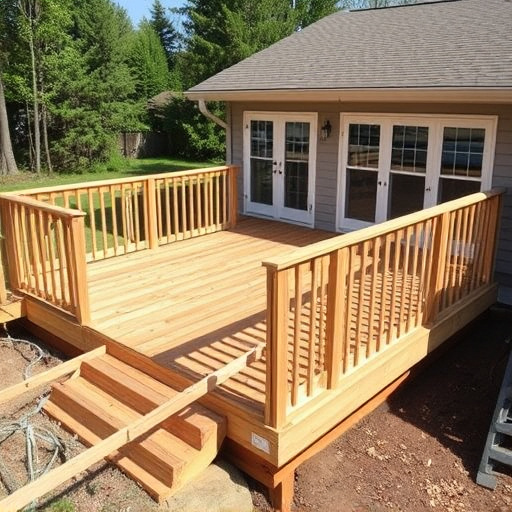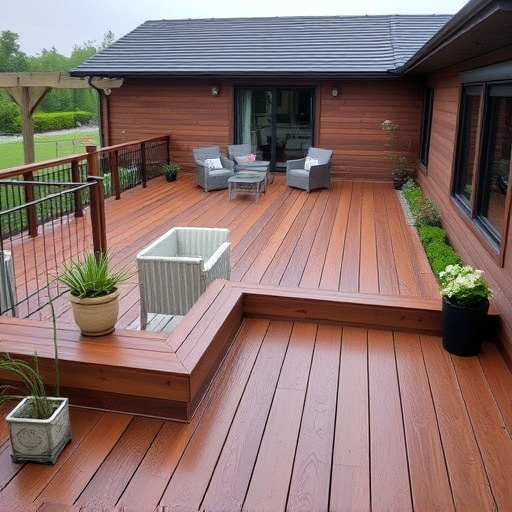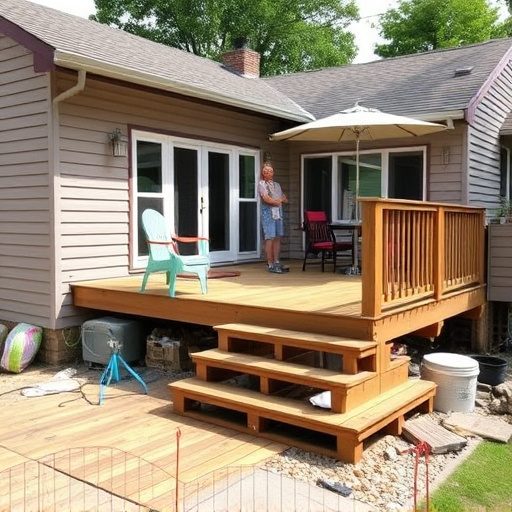Before starting any deck framing project, conduct a thorough site assessment to identify and address existing conditions like uneven terrain, debris, and incompatible structures. Professional preparation ensures a level surface, structural integrity, and compliance with building codes, facilitating a seamless and durable deck construction process.
Before beginning any deck framing, ensuring a level ground is paramount for a sturdy and stable structure. This comprehensive guide will walk you through the essential steps of preparing your site. Start by assessing the area, identifying potential issues, and clearing away debris and vegetation. Next, meticulously measure and mark the deck’s perimeter, followed by compaction using either heavy equipment or hand tools. Discover effective grading and leveling techniques, from traditional hand methods to advanced mechanical solutions, ensuring every inch of your foundation is perfectly level, crucial for both structural integrity and efficient drainage.
- Assess the Site and Clear the Area
- – Identifying potential issues with the ground
- – Removing debris, vegetation, and existing structures
Assess the Site and Clear the Area
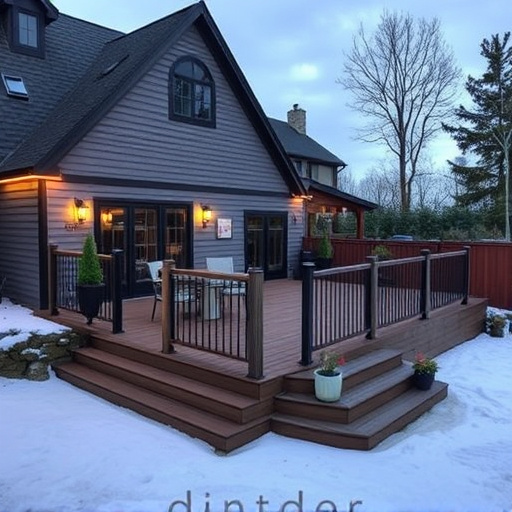
Before beginning any deck framing project, a thorough assessment of the site is essential. This includes evaluating the existing landscape and identifying potential challenges or obstacles that may impact the construction process. Look for uneven terrain, trees or shrubs that could interfere with the deck’s layout, and consider the overall accessibility of the area where the deck will be built. By carefully assessing the site, you can ensure a solid foundation for your deck framing, which is crucial for its structural integrity and longevity.
Clearing the area is another critical step in preparing for deck construction. Remove any debris, such as branches, leaves, and grass, that might interfere with the installation process. Also, consider the removal of existing structures or materials like old siding, roofing, or fences, especially if they are in the way or not compatible with your new deck design. Professional siding and roofing services can assist with these tasks, ensuring a clean and level playing field (or rather, deck surface) for when you’re ready to start framing.
– Identifying potential issues with the ground
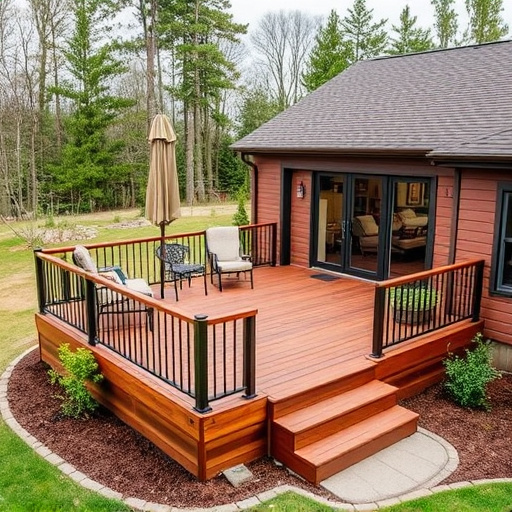
Before beginning any deck framing project, it’s crucial to thoroughly inspect and prepare the ground surface. While it may seem like a simple task, the ground beneath your deck plays a significant role in its structural integrity and longevity. One of the primary considerations is identifying potential issues that could hinder deck framing. Uneven or poorly compacted soil, large rocks, roots, and buried debris are common problems that can make leveling difficult. These issues not only complicate the process but also pose risks to the overall stability of your deck.
For instance, an uneven ground surface can lead to warped or crooked framing, compromising the structural integrity of your deck. Additionally, poor soil compaction might cause settling over time, leading to cracks and other structural damages. Engaging home exterior services professionals with experience in siding services who are adept at professional siding installation is essential to identifying and rectifying these issues before beginning deck framing, ensuring a solid foundation for your future outdoor retreat.
– Removing debris, vegetation, and existing structures
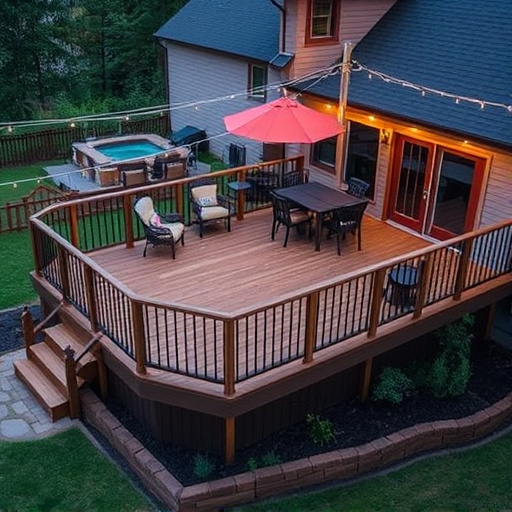
Before you begin any deck framing project, it’s essential to clear the site and prepare the ground. The first step in this process involves removing all debris, such as twigs, branches, and leaves, which can interfere with the construction process and the overall stability of your future deck. This meticulous task ensures a clean slate for your project.
Additionally, you’ll need to eliminate any vegetation growing on or near the designated area. Roots can disrupt the leveling process and even compromise the structural integrity of your deck over time. Moreover, existing structures like old fences, sheds, or previous decking must be carefully taken down and disposed of properly. This step is crucial to ensure that your new deck framing has a solid foundation and adheres to local building codes, especially when considering residential siding repairs or installations for a seamless finish.
Before beginning any deck framing project, ensuring a level ground is essential for a solid foundation. By thoroughly assessing the site and clearing away debris and vegetation, you create an ideal canvas for your new deck. This initial step involves identifying and rectifying any ground irregularities to guarantee a stable and durable structure. With a level surface, your deck framing will be accurate, strong, and capable of withstanding the test of time.








